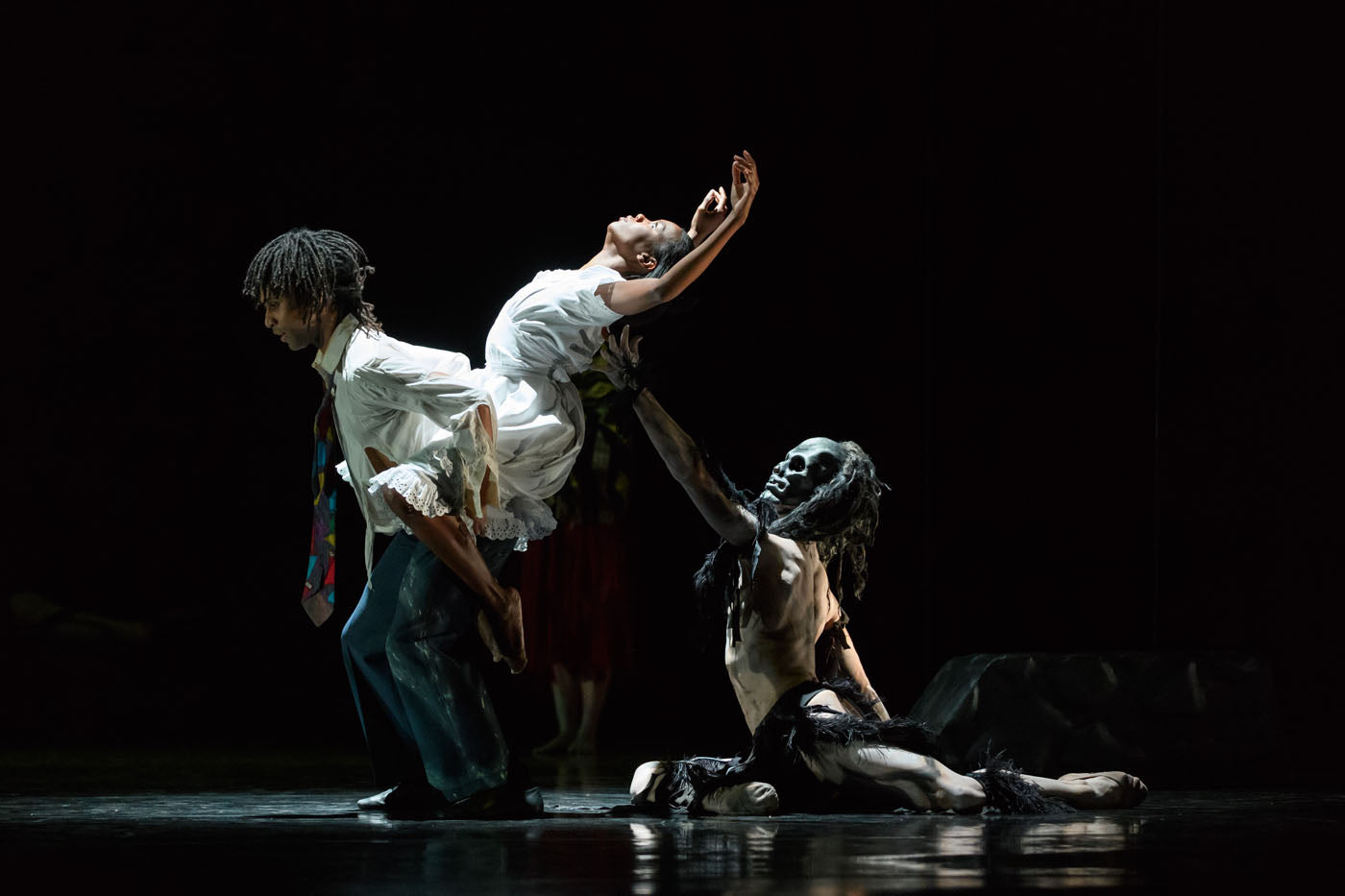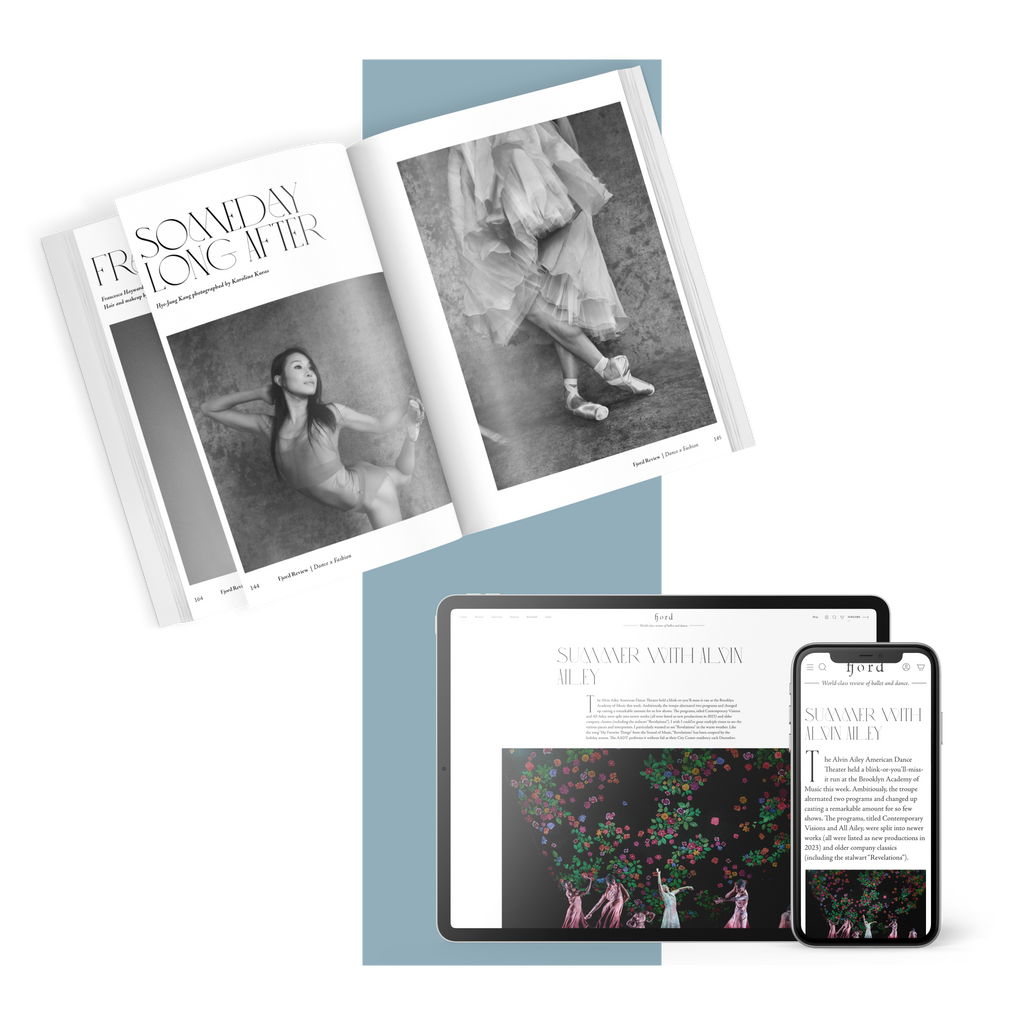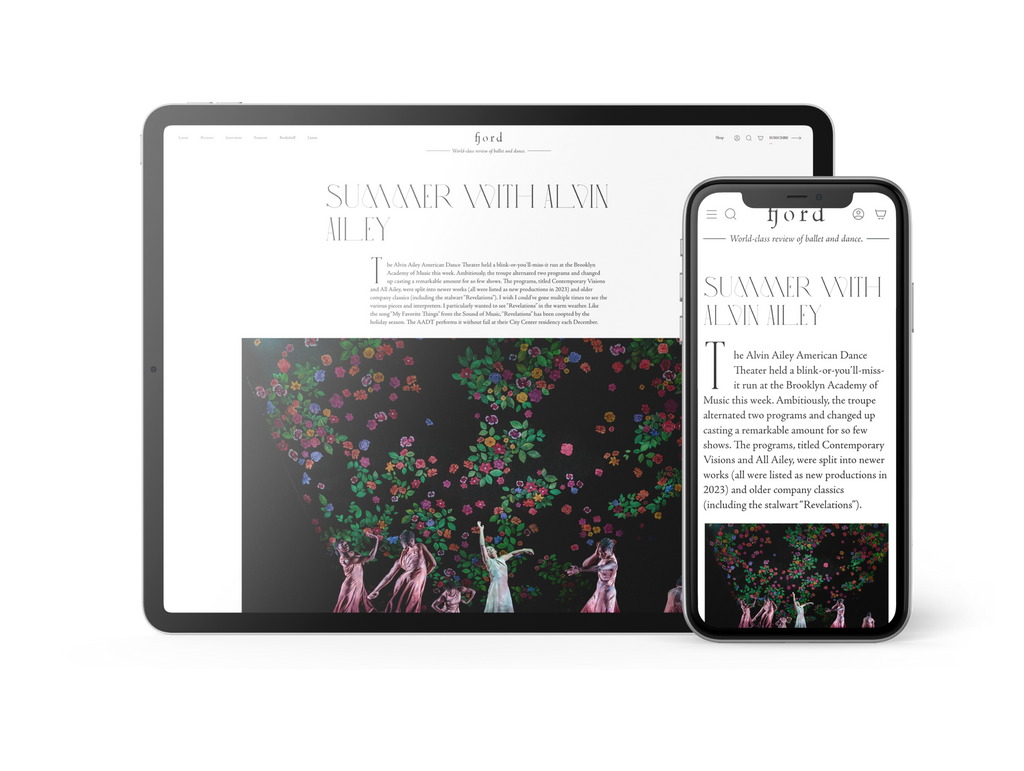“Tomorrow” by Lucy Guerin (with a gorgeous, pulsing soundtrack by post-techno artist Scanner) is presented on two split level sets. Based on Act 5 from Macbeth, two very different scenarios are presented. On the right, a clawing hand appears, signifying a supernatural being. Then the witches emerge, looking like odd, Brechtian rag-dolls. Their enchantments seem innocent, grasping for something beyond their reach, as they flail, fall in line and play diseased games of “Ring a Ring o' Roses.” The whole scene is like an asylum for wayward, misunderstood children rather than anything frightening.
Daniel Davidson yet again proves to be a mesmerising force of nature, the loose-limbed posture in his isolations suggesting urban dance shaping. He is a commanding presence, whether solo or as in group work. Hannah Rudd also impresses, the picture of vulnerability during the implied horror of Macbeth's violence, yet a wise instinctive performer. To the left, the Scottish play is represented, albeit in reverse order, through pendulum-like movement and ringing of hands, the ensemble like CEOs of industry sketching out forms of control—a nod to those in power meeting in boardrooms to deceive and murder, blood on their hands and blood money in the bank.
What happens next is unexpectedly brilliant—the partition separating the differing narratives lifts, and the charcoal-clad business men and women integrate with the witches. Only, they don't really. They can only dance around the peripheries, strutting in predatory poses, eyeballing the waif-like witches as outsiders. The two can never become one, the rich will never be reconciled as the people who make decisions for the good of the poor. Such overlaps of traditional balletic movement with glitchy bumps and starts should be jarring tonally, yet Guerin's intelligent, bold choreography is a fresh approach in how to stage Shakespeare for a whole new dance audience.
Less successful is Kim Brandstrup's “Transfigured Night” which looked so good as a concept on paper, at least. Aesthetically, it is beautiful, using the palette of controversial painter Egon Schiele and the poetry of Richard Dehmel—both nineteenth century artists who dealt in tackling societal taboos (for the time) such as sexuality and romantic abandonment. Yet, for all of the staging decisions which are exciting at the start (like a wall of dancers turning away from the pregnant character depicted by Simone Damberg Würtz) ultimately it feels a little vanilla. Miguel Altunaga and Damberg Würtz's pas de deux tussle with rejection, acceptance and desire, where one has strayed and the other cannot entirely forgive. Brandstrup's choreography is often unfortunately mired in cliches—falling into each other's arms in endless hopeful pirouettes; predictable lifts and falls, and pulling at each other when locked in mutual antipathy. Such gestures are a little played out and do not always coalesce in a way that feels anything less than compromised.
Worse still, there are moments which are nothing short of twee. Schiele may have been many things, but sentimental he was not. Still, the ensemble work at the beginning is breathtaking, and the Schoenberg music is heartstopping.
Headlining piece “Ghost Dances” is nothing short of brilliant, full of lyrical movement. Inspired by General Pinochet's purges of 1973, where some 35,000 civilians were killed, Christopher Bruce's piece resonates now as its first inception in 1981, precisely because of the conflict we experience worldwide—whether firsthand, or vicariously on our television screens. Indeed, the Chilean Human Rights Committee approached him to create this piece as a response to the massacres.
Three dancers (Daniel Davidson, Liam Francis and Juan Gil) all signifying Mexican Day of the Dead-like figures with skeletal costumes and rags, whirl with provocative, Shamanic intensity, or dance in a chain—impish, menacing, indiscriminately circling their prey. At one eerie moment, they stare back at the audience in a chilly memento mori.
A seemingly funereal procession of townsfolk enters the space, becoming a circular folk dance where residents at once celebrate and lament their dead. Nicholas Mojsiejenko's arrangements of South American music has a richness and intensity which complements, or rather surrounds, the primary colour-clad ensemble. There is a defiant, Latin bounce to the heels of the women, weighted at all times by the spirits who sit observing at each corner, ready to pounce.
This is death as the ultimate sadist, ready to cut off youth in its prime—a hand on a shoulder strikes the killing blow, before slinking off into the long shadows. A mass of fire and lust is snuffed out in an instant—as with Miguel Altunaga and Carolyn Bolton's mating ritual, where he struts towards her, willingly led by his tie in her hand: their courtship devastatingly undone. Altunaga was a leaping acrobat, Bolton as his lover sensual and sassy, only to be killed before him. Bruce's atavistic choreography speaks to the primal in us, ever watchful and wary, wondering when the end will come; yet childishly perhaps, hoping for a soft landing.









comments